Wildlife Safaris In Uganda
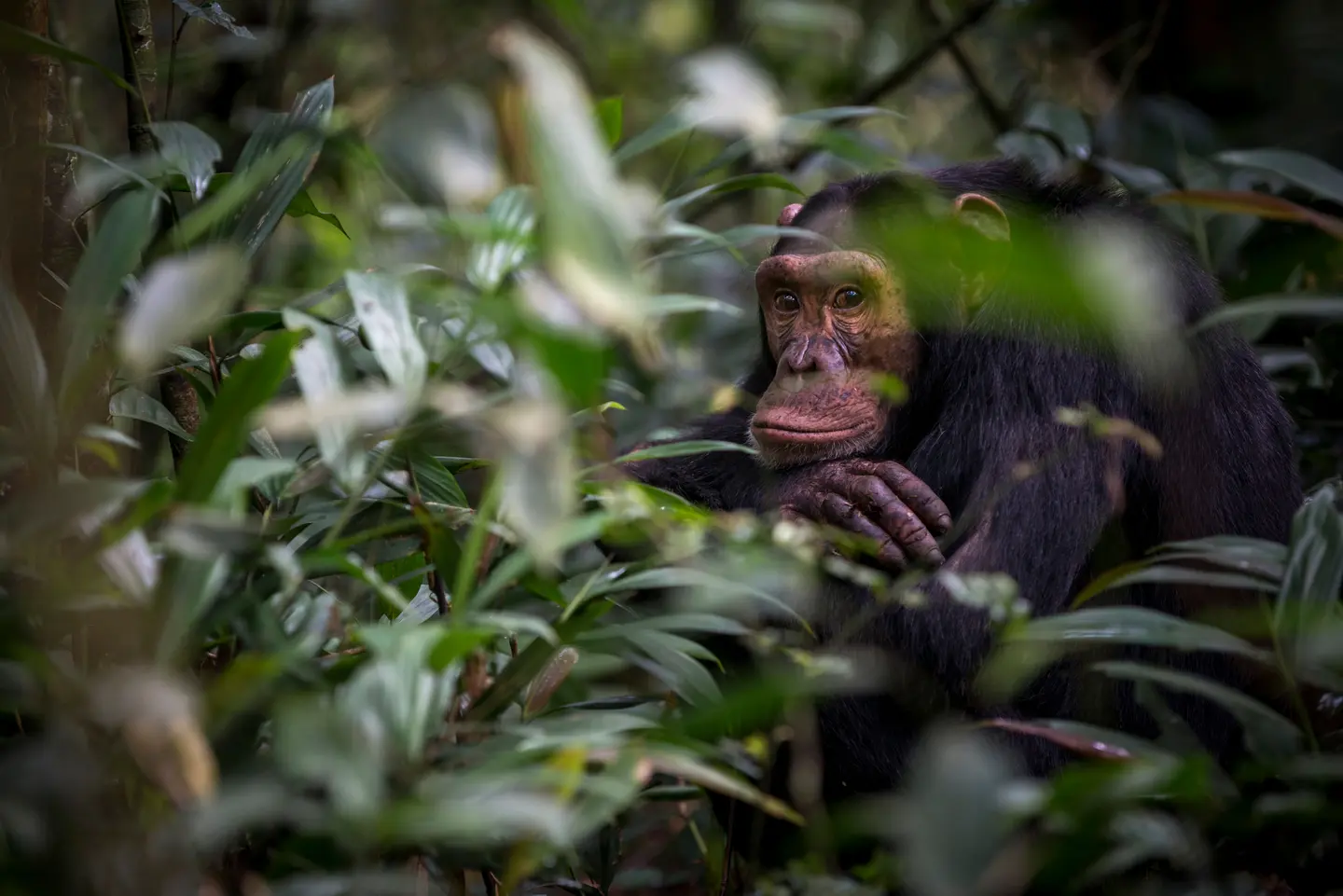


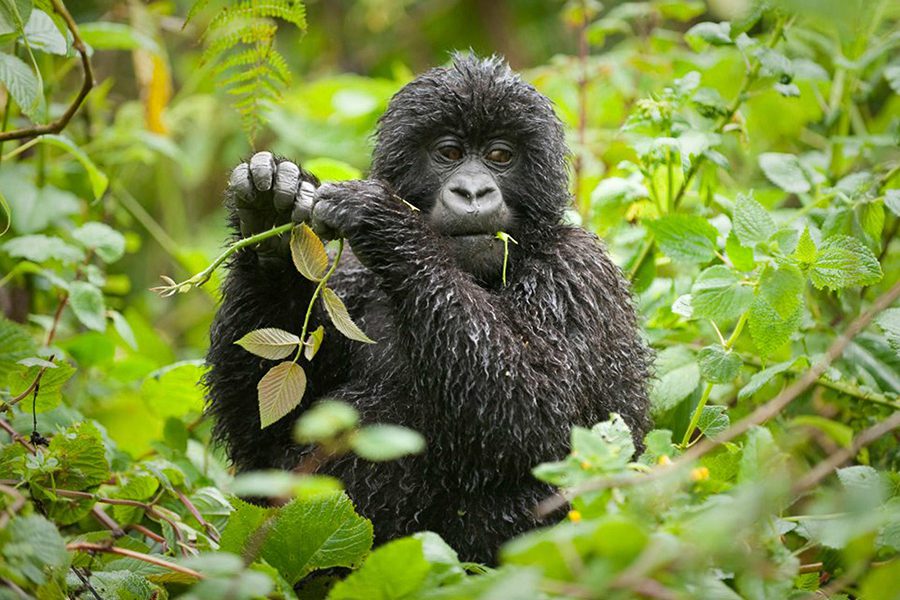
Uganda Wildlife Safaris
Uganda offers exceptional wildlife-viewing opportunities in super-scenic environments.
The country has 10 beautiful national parks that spans vast savannah grasslands, lush rainforests, and winding waterways. Uganda boasts over 1,080 bird species—half of all the species found in Africa—along with 345 mammal species, 4,500 plant species, 142 species of reptile, 1,250 types of butterflies, and so much more.
Greenway invites you to embark on Uganda wildlife safaris, where you can experience thrilling game drives, serene river cruises, or scenic walking safaris, all while encountering magnificent silverback gorillas, playful chimpanzees, and enormous elephants up close.
Mountain gorillas
Mountain gorillas are a true highlight of Uganda wildlife safaris, having helped put the country on Africa’s tourist map.
With only around 1,063 of these incredible creatures left in the world, more than half of them live in Uganda’s southwestern region, in the mist-covered forests of Bwindi Impenetrable Forest and the volcanic slopes of Mgahinga Gorilla National Park.
Thanks to successful conservation efforts and well-managed gorilla safaris in Uganda, their population has grown by nearly 50% in the past decade.
On a gorilla trekking adventure, which can take several hours through the forest, you’ll join a small group of no more than eight tourists to meet a habituated gorilla family. Spending up to an hour with these majestic creatures is truly a once-in-a-lifetime experience.

Chimpanzees
In Uganda, gorillas aren’t our only close relatives—chimpanzees share that title too. Over 5,000 chimps call various forests across the country home, from the underground forest’ of Kyambura Gorge, in Queen Elizabeth National Park and the mahogany forest of Budongo.
However, Kibale National Park is the best place to spot them. This stunning rainforest is home to an impressive 13 species of primates, so while tracking chimps on a guided tour, you’ll likely encounter a variety of monkeys.
Chimps are much more energetic than gorillas, and tracking them through the treetops is an exhilarating adventure, as you follow their shrieks and the rustle of leaves high above.

Monkeys
During their Uganda wildlife safaris, visit quickly learn to keep an eye out for the clever and agile baboons. These mischievous primates are masters of swift snatching—before you know it, they can leap through an open car window, grab an unattended lunch, and be happily munching by the roadside in a flash.
You’ll soon find yourself rolling up your windows—and sunroof—whenever they’re nearby! But baboons aren’t the only primates you’ll encounter. Over 20 monkey species have been recorded in the country.
Vervet monkeys are full of energy and playfulness; you might spot them frolicking around your lodge or camp in the national parks, and you’ll certainly hear them jumping on the roof of your tent or cabin. They’re especially drawn to open-air showers!
Black-and-white colobus monkeys are commonly seen perched in trees along the roadsides, their distinctive shaggy fur making them easy to spot and fun to watch.
Golden monkeys, on the other hand, are much rarer and require a special trekking tour in Mgahinga Gorilla National Park, where you can track them through the bamboo forests that cling to the slopes of the Virunga Volcanoes.
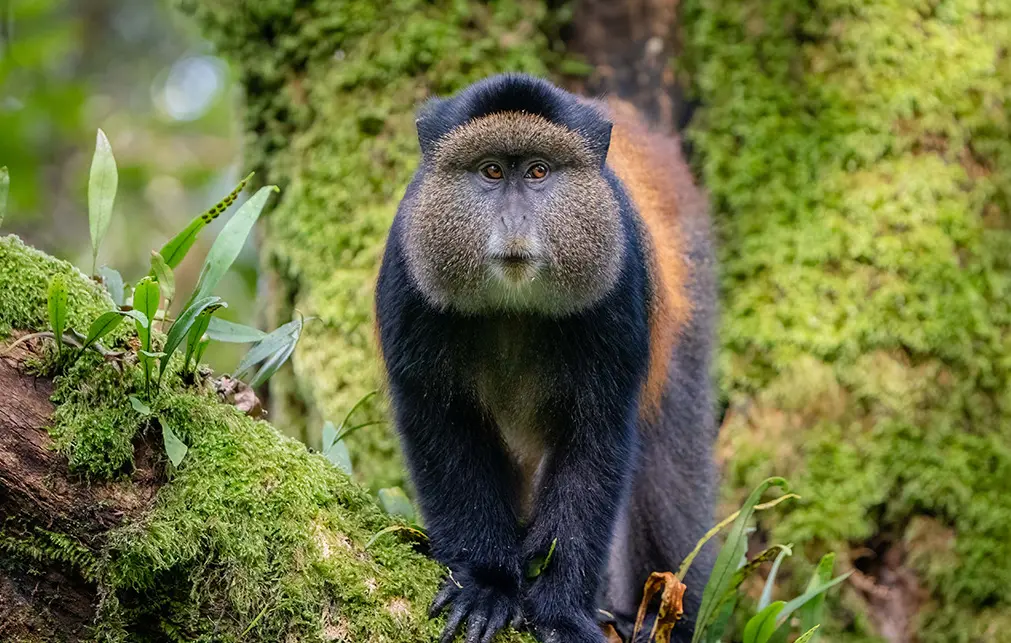
The Big Five
While many African safaris lead you to the vast plains of Kenya or Tanzania after gorilla trekking, Uganda offers its own incredible game-viewing opportunities, so you don’t need to leave to continue your adventure.
Queen Elizabeth, Murchison Falls, and the remote Kidepo Valley are all home to four of the Big Five. The latter two are commonly spotted during river cruises and game drives.
In Murchison Falls, it’s even possible for a herd of elephants to block the road, meaning you might encounter far more of these majestic animals than you expected!
Lions are more elusive, well camouflaged, and harder to find, but with a skilled guide, there’s still a good chance of spotting them.
Leopard sightings are even rarer; these solitary, nocturnal hunters are experts at blending into their surroundings. The fifth member of the Big Five, the black rhino, is sadly extinct in Uganda, and the white rhino was also wiped out by poaching.
However, in 2005, six white rhinos were reintroduced to Ziwa Rhino and Wildlife Ranch near Murchison Falls National Park. Thanks to a successful breeding program, the sanctuary now boasts over 30 rhinos, and you can even track them on foot with an expert ranger.

Tree-climbing lions
The Ishasha sector of Queen Elizabeth National Park is renowned for its unique tree-climbing lions. Unlike most lions in Africa, these fascinating predators can often be seen lounging high up in the branches of large trees, offering an extraordinary and unforgettable spectacle for those lucky enough to witness it.
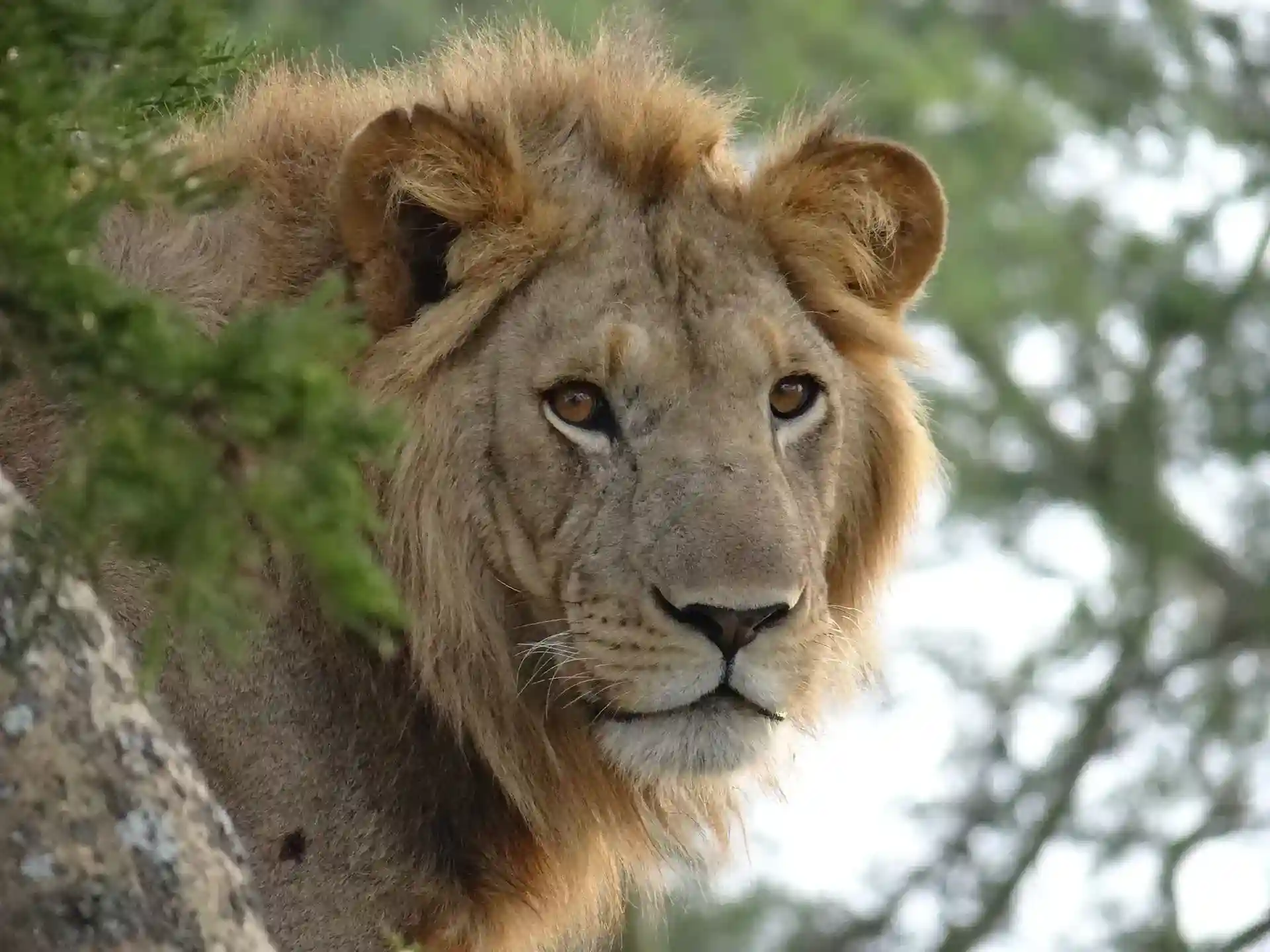
Rothschild's giraffes
The Rothschild giraffe, the tallest land animal on Earth, can grow up to 6 meters tall and weigh as much as 1,200 kilograms. These gentle giants favor the open savannah, where they feed on acacia plants and the leaves of various trees. The best spots to observe them are in Kidepo Valley and Murchison Falls National Parks. In 2015, 15 Rothschild giraffes were introduced to Lake Mburo National Park from Murchison Falls to boost the park’s wildlife diversity. Today, Lake Mburo is home to over 100 of these magnificent creatures.

Uganda Kob
The Ugandan kob, a native antelope species, is not only a common sight in many of Uganda’s national parks, including Murchison Falls, but also holds the distinction of being the country’s national animal.
Known for their striking reddish-brown coats and graceful spiral horns, these elegant antelopes are integral to Uganda’s rich wildlife heritage.
Male kobs are especially eye-catching with their impressive horns, while the females are smaller and lack the spirals. Found grazing in the savannahs and wetlands, the Ugandan kob is a symbol of the nation’s natural beauty and biodiversity, representing the diverse wildlife that thrives within Uganda’s protected areas.
The Birdlife of Uganda
In general, the greater the variety of ecosystems, the more bird species you’ll find – and Uganda is a prime example, teeming with incredible avian wonders.
Remarkably, this small country—roughly the size of the UK—boasts over 1,080 bird species, making up nearly 10% of the world’s total. This incredible diversity is matched by a number of expert bird guides who help visitors spot the stunning range of avian life.
Bird enthusiasts flock to Uganda for a chance to see the rare shoebill, a stork-like bird over a metre tall, with a massive bill that looks like a shoe. Though elusive, Mabamba Swamp and Murchison Falls National Park are among the world’s best spots to catch a glimpse of this prehistoric-looking creature.
Other iconic species to look out for on your Uganda birding trip include Uganda’s national bird, the ‘dancing’ grey-crowned crane, giant kingfishers, African fish eagles, red-throated bee-eaters, great blue turacos, goliath herons, and bar-tailed trogons.
Don’t forget to admire the intricately woven nests of weaver birds hanging from the trees – these remarkable creations are true masterpieces of the bird world.
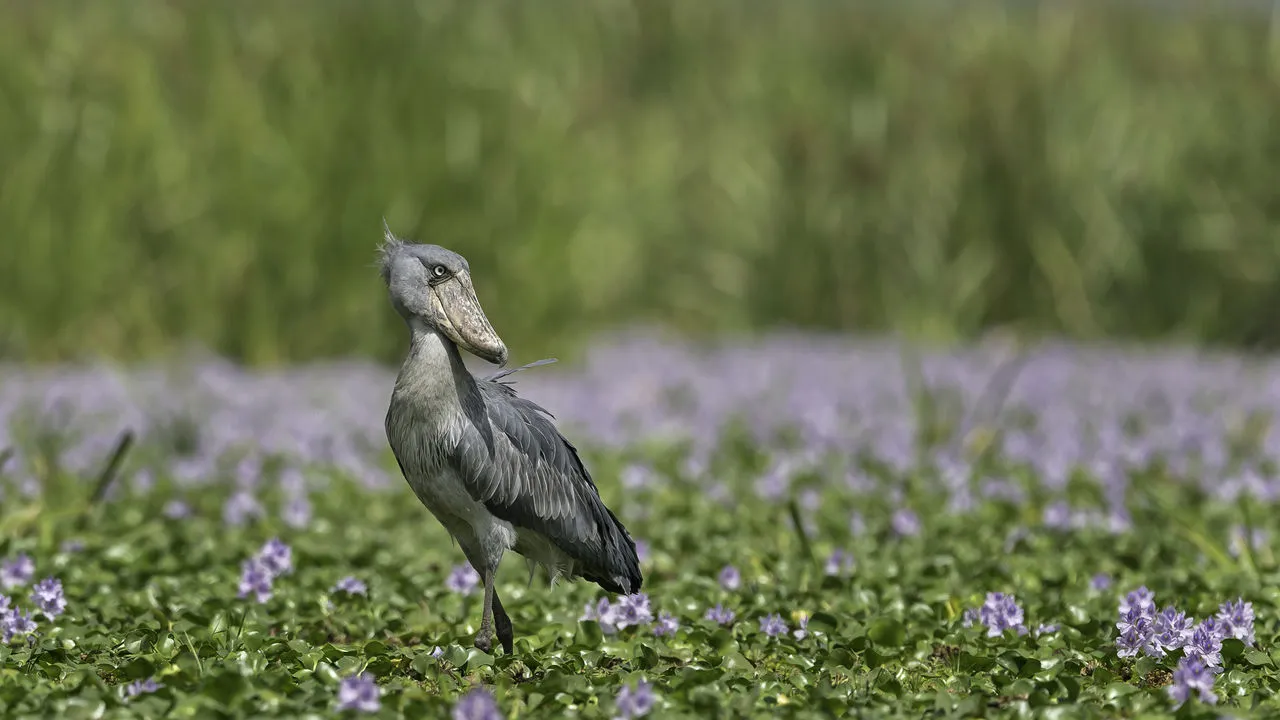
Hippos and Crocodiles
The Nile River and its associated water bodies such as Lake Victoria and the Kazinga Channel, is home to large populations of hippos and Nile crocodiles.
These powerful creatures can be spotted during boat safaris, offering an up-close look at their impressive size and behavior in their natural habitat.
Hippos, often seen basking in the water or on the shores, are particularly fascinating with their playful yet territorial nature, while the Nile crocodiles, known for their stealth and strength, glide silently through the water, making for an unforgettable Uganda wildlife safaris experience.

Zebras
Uganda is home to the striking Burchell’s zebra, which can be spotted in both Lake Mburo National Park and Kidepo Valley National Park.
These social creatures live in large herds, often grazing across the open savannah or near the park’s waterholes. While they share a similar appearance and anatomy with horses, zebras have a weaker back, so despite common myths, they cannot be ridden.
When threatened, zebras band together in a clever defense mechanism—their bold stripes create a disorienting effect, making it hard for predators to distinguish one zebra from another. This fascinating behavior helps them stay one step ahead of danger.

Best Time for Wildlife Viewing in Uganda
The ideal time for wildlife viewing in Uganda is during the dry seasons, which run from June to August and December to February. During the rainy seasons, from September to November and March to May, some roads can become difficult to navigate.
While gorilla trekking is possible year-round, the experience can be less enjoyable in the wet season due to heavy rainfall, which can make the trek more challenging.
Our Trusted Partners




